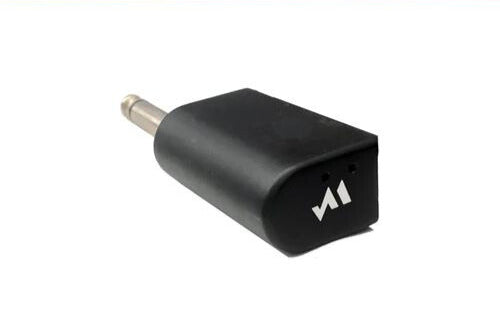Break Out of the Box With These Pentatonic Patterns

Ahhh... pentatonic scales: the universal language of guitar playing, and the first step on the stairway to soloing heaven. If you’ve ever tried your hand at learning lead parts, it’s likely that this is the first scale you learned:

If so, this is a great place to start, as you can easily move the scale up or down the neck as needed to play in any key you like! It’s an incredibly versatile option to get you started on your lead solo journey. A scale pattern in a closed position (no open strings) like the one shown above, that sticks to roughly the same grouping of frets, is called a box pattern. If you want to play more notes in the same key at other positions on the fretboard, you can learn more box patterns!
While this is a perfectly valid and reasonable approach, let’s be honest - who wants to be put in a box anyway?! As you progress on your journey to soloing greatness, perhaps the most beneficial scale pattern to learn (once you’ve mastered that first pentatonic) is called the Diagonal Pentatonic Scale. Don’t worry - it’s less difficult than it sounds. This pattern allows you to slide up and down the neck with relative ease, and it’s based around a simple pattern that’s easy to learn! Here’s what it looks like in the key of A minor/C major:

Here’s how this scale breaks down:
- First, you play a group of 2 notes on one string. Okay, not so bad!
- Next, there’s a group of 3 notes on the next string up, with each notes separated by a whole step - or 2 frets. No sweat, right?
- At this point, you’ve already covered all five notes of the pentatonic scale. You can now repeat the pattern an octave up on the next string set!
- Each octave of the scale contains a positional shift, so as you play up the scale you’re shifting higher up the neck, hence the name Diagonal Scale.
Here’s the same pattern, but starting with the 3 notes on the E string, this time in G major/E minor:

1. You can play the 3-note part of the scale with 3 different fingers stretched out, or you can incorporate a 2-fret slide. The slide is handy for two reasons:
- It automatically puts you in perfect position for the next octave.
- It adds an articulation that makes it sound more like music, and less like a scale! Practice using slides, hammer-ons, and pull-offs, as well as different fingerings to explore how these scales can help you develop a vocabulary of licks. Just be careful which fingering you choose when shifting from the G to the B string, as there is an additional 1 fret shift in the pattern at that spot.
2. Pay attention to where the root notes are indicated for both the minor and major pentatonic scales. The major and minor root notes may be different, but the scales are identical, so you can use the same pattern for both! Since this pattern is repeated in 3 different octaves, it’s super useful for getting to know how your scales and licks can be centred around root notes and key centres. Try practicing this pattern in minor keys (focusing on the minor root notes), and major keys (focusing on the major root notes), and see how it sounds!
3. Another great thing about the Diagonal Scale is how it shifts up and down the neck naturally - a feature you can harness to easily connect those box patterns you’ve been practicing already! Here are a couple diagrams illustrating how the diagonal scale pattern overlaps with common closed positions.
- Keep an eye on the grey dots, which will help you recognize the box patterns that are in the same areas as the Diagonal Scale.
- Try soloing in one area of the fretboard, and then make your way up or down to another area as smoothly as possible.


Once you start to feel comfortable with the Diagonal Pentatonic Scale, you’ll start to notice elements of it in classic guitar riffs. Plug into your Jamstack and use it on a simple riff such as My Girl by The Temptations, or Voodoo Child (slight return) by Jimi Hendrix, and don’t hesitate to take it to the limit with the Eagles’ Life in the Fast Lane!
---
Rob McLaren is a guitarist and lover of all things stringed, you can catch him playing guitar with Union Duke or picking the banjo with his bluegrass outfit the Barrel Boys
Want the amp experience everyone is talking about? Pre-order your Jamstack 2 amp today!



